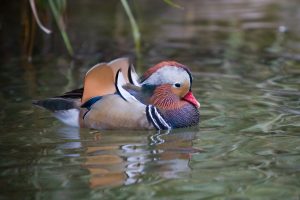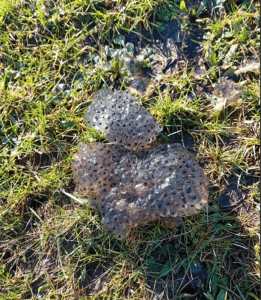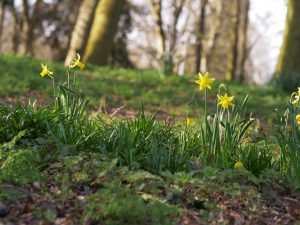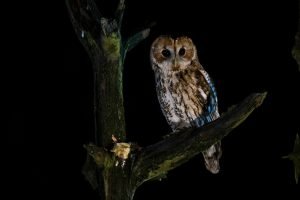February’s wildlife highlights
PUBLISHED ON: 6 FEBRUARY 2025In February there are some days when spring seems to be just around the corner, and others when winter keeps a tight grip, still there’s plenty of wildlife to see and signs of spring emerging.
Pools and streams are always good places to look for birds, even in winter. The grey heron and little egret are seldom far from water, and you may find a grey wagtail with its yellow and grey plumage and particularly long waggy tail!
You may spot one of the more exotic birds in the Forest: the mandarin duck. The male is particularly striking with yellow, orange, black and white plumage. First introduced from Hong Kong, they escaped from country estates and have been breeding in the New Forest since the 1980s. They nest in holes in trees but at this time of year you may see them on Forest pools feeding alongside mallard ducks.

Frogs are emerging from their winter hiding places to make their way to water to begin spawning. In some areas toads, newts and frogs will brave it across roads, migrating to familiar water sources for breeding. Some of these areas have dedicated volunteers on regular toad patrols to help them get across safely.
Whilst on a walk in the Forest, there’s a chance you may stumble across a clump of spawn away from water, on a path or in the grass. It may remain from a dried up puddle or have been dropped by a bird. If you can relocate the spawn to a nearby water source, even a large puddle, there’s a chance it will survive. Freshwater Habitats Trust are asking everyone to keep a look out for, and report, signs of amphibian breeding on their online PondNet Spawn Survey to provide a better understanding of when and where frogs and toads are breeding.

Vegetation will also begin to show signs of spring in February. Hazel catkins and the new shoots of grass, nettles, bluebells, dog mercury, violets and cuckoo pint will start to emerge. If you’re lucky you will spot a few early-flowering wild daffodils, primroses, wood anemones and lesser celandines in the woodlands at the end of the month.

Small birds such as nuthatches, treecreepers and different types of tits and finches can be seen more easily when the trees are leafless. They are feeding as much as they can at the end of the long winter and are delightful to watch. Listen out for increasing bird-song: in gardens and woodland thrushes are beginning to sing, and out on the open heathland listen for the rare woodlark singing over its territory. A timely reminder that the time to stick to paths and keep dogs under control is will soon be upon us.
At night listen out for the hauntingly distinct calls of tawny owls. The males and females will often duet as they guard their territories in preparation for egg laying, which usually occurs in February/March. Find out more and listen to their calls here Tawny Owl | BTO – British Trust for Ornithology

A mild February day will bring out the hardy insects that have survived hibernation. You may spot butterflies such as small tortoiseshell, peacock, red admiral (main photo) and brimstone, as well as bumble bees, winter gnats and hoverflies.
In the coniferous woodlands, keep an eye out for large ant hills constructed of twigs, leaf-stalks and pine needles. These can be almost a metre high and two metres in diameter and are built by southern wood ants, which are also beginning to emerge.

